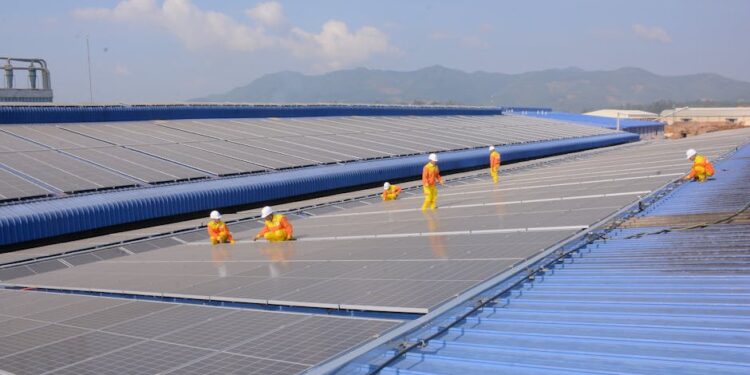In the world of business, change is inevitable. Companies constantly adapt to market demands, economic shifts, and internal strategies. One company that exemplifies this constant evolution is Johnson Controls. Known for its expertise in producing fire, HVAC, and security equipment for buildings, Johnson Controls has a long history of organizational restructuring and layoffs. In this article, we’ll explore this phenomenon in detail, considering recent and historical employment changes within the company. We will also discuss how these layoffs fit into a broader industry trend, analyze the company’s business model, and review its financial performance.
A Brief Look at Johnson Controls
Johnson Controls is a multinational company headquartered in Cork, Ireland. It plays a significant role in delivering building efficiency solutions worldwide, offering products and services that improve energy utilization and enhance facility safety. Established in 1885, the company has evolved tremendously, maintaining its relevance in an ever-competitive market through strategic mergers, acquisitions, and adaptative management approaches.
Despite its success, the company has undertaken numerous layoffs and restructuring efforts, often in response to economic pressures or shifts in strategic focus. These measures, while difficult, are often necessary to keep the company agile and competitive.
Johnson Controls Layoffs 2025
The economic landscape for 2025 suggests further challenges and opportunities for Johnson Controls. Although no official announcements have yet been made regarding specific layoffs in 2025, historical patterns suggest that restructuring may continue as part of the company’s strategy to streamline operations and maximize efficiency. Market analysts often anticipate such moves in response to changing market demands or technological advancements.
It’s essential to note that layoffs are not always indicative of a company’s decline. Instead, they can reflect a strategic pivot or an effort to concentrate resources in more promising areas of the business.
A Detailed Analysis of Johnson Controls 2024 Layoffs
In 2024, Johnson Controls faced notable layoffs, primarily driven by economic restructuring and a shift in corporate strategy. A key factor was the company’s need to adapt to the post-pandemic economic reality. As demand for certain products fluctuated, Johnson Controls found it necessary to reassess its manufacturing and operational strategies.
Layoffs in 2024 affected several of the company’s global branches, each experiencing different levels of impact based on location-specific market conditions. For instance, while some facilities saw reductions in staff, others experienced relative stability or even growth, depending on the demand for their particular set of services or products.
These layoffs weren’t executed in isolation. They were part of a broader effort to align operations with emerging market needs, focusing more on areas with higher growth potential while cutting back in areas with diminishing returns.
Key Points Behind These Layoffs
Several factors contributed to the layoffs at Johnson Controls. Economic downturns, such as recessions, often lead companies to reduce operational costs. Moreover, fluctuations in demand, either rising or falling, can influence staffing levels. While a shortage in demand can lead to layoffs, a sudden increase might mean a temporary hiring surge followed by adjustments when the demand normalizes.
Another significant factor is strategic reassessment. Johnson Controls, like many large companies, continuously assesses its operational footprint to stay competitive. This can lead to the consolidation of facilities, leading to staff reductions in some areas while reallocating resources elsewhere.
Finally, advancements in technology and automation mean that some jobs become obsolete over time, requiring companies to restructure their workforce accordingly.
Are Layoffs Part of a Bigger Industry Trend?
Absolutely. Layoffs are a common strategy used by companies across various industries to maintain competitiveness and financial health. In the case of multinational corporations like Johnson Controls, global economic shifts, such as those experienced during the COVID-19 pandemic, often trigger widespread reassessment and reallocation of resources.
Moreover, as industries increasingly adopt automation and digital technologies, a shift in workforce requirements follows. Companies are frequently required to lay off employees with outdated skills while recruiting for positions demanding new expertise. This industry-wide trend highlights the need for employees to continuously update their skills to remain relevant in the workforce.
Effective communication and strategic foresight can help companies minimize the adverse impact of layoffs, ensuring they’re perceived as a necessary step towards future growth rather than a dire consequence of mismanagement.
Johnson Controls Business Model
Understanding Johnson Controls’ business model provides insight into why layoffs occur as part of its strategic adjustments. The company’s core focus is on optimizing building efficiency, providing advanced heating, ventilation, air conditioning (HVAC), fire, and security systems.
A significant portion of its revenue comes from its Building Technologies & Solutions segment, offering sustainable building management solutions connecting energy, technology, and service needs. This model allows for flexibility to pivot in response to market changes, sometimes resulting in workforce reductions, allowing the company to reinvest in growth areas.
Furthermore, being a global player means that Johnson Controls must continually balance its operations across different markets with varying demand levels, regulatory environments, and labor costs. This global balancing act is crucial in ensuring the company’s longevity.
Financial Performance Of Johnson Controls
A company’s financial performance often directly influences its hiring and layoff decisions. As of recent reports, Johnson Controls has shown a mixed financial trajectory, balancing periods of robust growth with phases of cautious cost-cutting. The company typically displays steady revenue generation attributed to its strong market presence and diversified product portfolio.
However, like many businesses, Johnson Controls wasn’t immune to the economic impacts of the COVID-19 pandemic, which affected its sales and supply chain. The subsequent economic recovery prompted the company to reconsider its strategic approach, ensuring sustained profitability by optimizing operations and refining its focus on growth markets.
The company’s approach to handling financial challenges and economic fluctuations reflects its commitment to remaining a leader in its field, even if it means difficult decisions, such as workforce reductions, are necessary.
Conclusion
The story of Johnson Controls is one of resilience and adaptability. While layoffs may seem daunting, they are often strategic decisions made to realign resources in response to market demands and financial realities. For Johnson Controls, this means continuously reassessing its workforce needs against a backdrop of global economic conditions and technological advancements.
Despite these challenges, Johnson Controls remains a prominent player in its industry, showcasing an ability to pivot and allocate resources to areas with promising growth potential. As we look to the future, it’s clear that laying off employees, though tough, is sometimes an essential step in ensuring long-term profitability and sustainability.
Providing an in-depth understanding of these business strategies helps us recognize the broader implications of these layoffs. If you’re interested in learning more about strategic business decisions and company insights, check out our website for detailed analyses and perspectives. Visit Lime Entrepreneur for more information on navigating the complexities of modern business.












